Note
Go to the end to download the full example code or to run this example in your browser via Binder
Robustness: Classification¶
Experiment initialization and data preparation
from piml import Experiment
from piml.models import ReluDNNClassifier
exp = Experiment()
exp.data_loader(data="TaiwanCredit", silent=True)
exp.data_summary(feature_exclude=["LIMIT_BAL", "SEX", "EDUCATION", "MARRIAGE", "AGE"], silent=True)
exp.data_prepare(target="FlagDefault", task_type="classification", silent=True)
Train Model
exp.model_train(ReluDNNClassifier(), name="ReluDNN")
Robustness test with default settings
exp.model_diagnose(model="ReluDNN", show="robustness_perf", figsize=(6, 4))
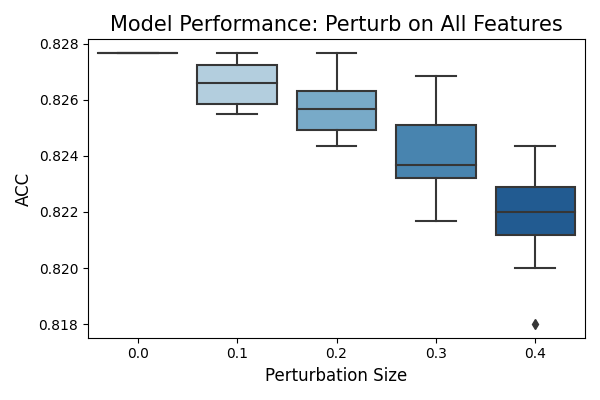
Robustness test with custom perturbation features
exp.model_diagnose(model="ReluDNN", show="robustness_perf",
perturb_features=["BILL_AMT1", "BILL_AMT2", "BILL_AMT3"], figsize=(6, 4))
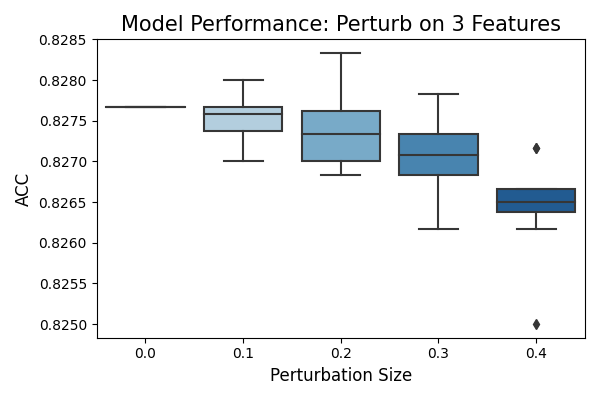
Robustness test with custom perturbation size
exp.model_diagnose(model="ReluDNN", show="robustness_perf", perturb_size=0.2, figsize=(6, 4))
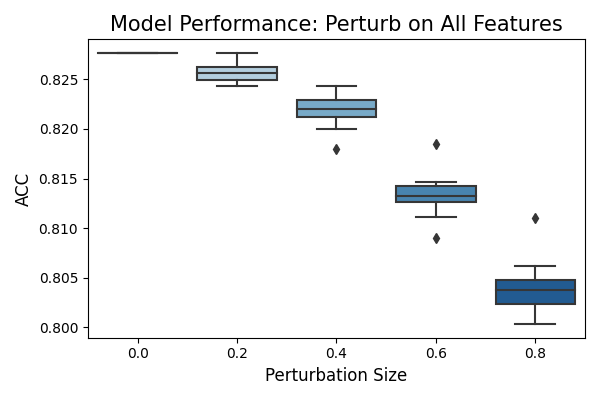
Robustness test with custom perturbation method
exp.model_diagnose(model="ReluDNN", show="robustness_perf", perturb_method="quantile", figsize=(6, 4))

Robustness test with custom metrics
exp.model_diagnose(model="ReluDNN", show="robustness_perf", metric="AUC", figsize=(6, 4))
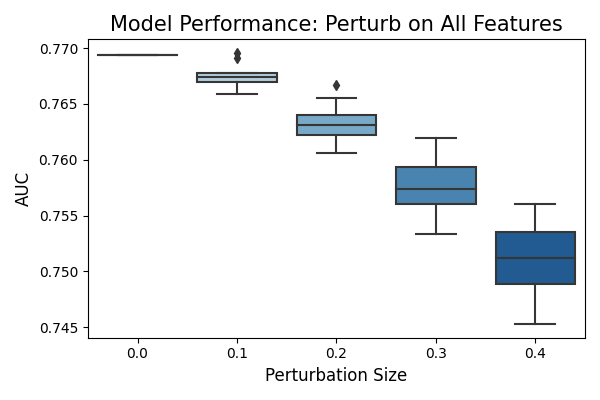
Robustness test on worst alpha-percent samples
exp.model_diagnose(model="ReluDNN", show="robustness_perf_worst", alpha=0.3, figsize=(6, 4))
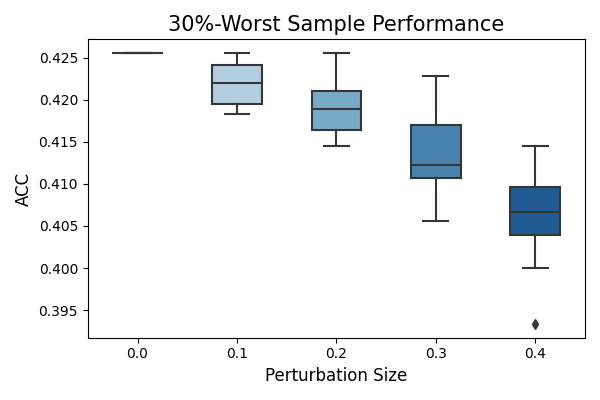
Total running time of the script: ( 1 minutes 9.751 seconds)
Estimated memory usage: 69 MB
